Teacher Notes in Yellow
"40 Steps Beach" in Nahant - teacher guide
This cove highlights many ideas. At first glance, the outcroppings look monolithic with weathering from the ocean. But as you look more deeply, a great deal more is revealed. This could be a great introduction for students in asking questions about rocks and making good observations. Several important things to study here:
1. Identifying rock types based on crystal size and internal color (not on external weathering features!)
2. Understanding time sequences in rock formations - which rock came first, second, third, etc.
3. Metamorphism and causes of metamorphism.
4. Effects of Weathering and Erosion
A careful study of this cove reveals that the West side (picture on left below) was probably a quarry. The rock faces appear to be too straight to have been weathered simply by wave and weather action. It turns out that gabbro from Nahant was an important source material for the Saugus Iron Works. While we aren't sure that this particular quarry was used, gabbro was also a common building stone for many years.
We haven't yet been able to find out much about the specific geologic history of this formation. It's possibly from the same early formation that created the Lynn Volcanics - this would place it at around 570 million years old. It's possible that it formed during a period of rifting, around 440 million years ago - other gabbros in the region were formed at this time. It's also possible that it formed much later, around the same time as the Medford Gabbro (around 190 million years old). Further study is needed!
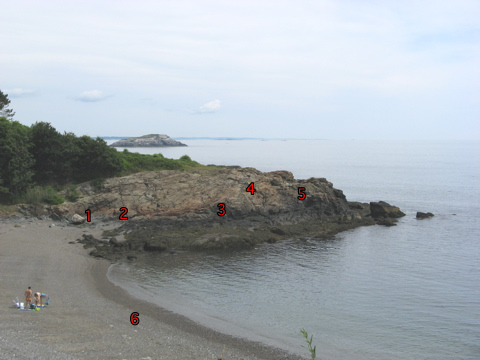
Click on a location number in the picture above to see more detail
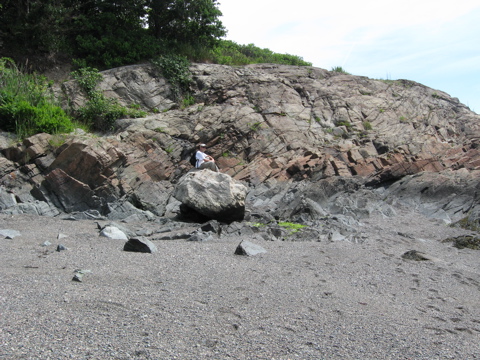
Location #1: Close up of outcropping. Notice clear bands of different colors: Dark grey, reddish-brown, and light brown/tan
Are the differences in color due to weathering and exposure to sea water, or do they represent three different rock types? How would you find out?
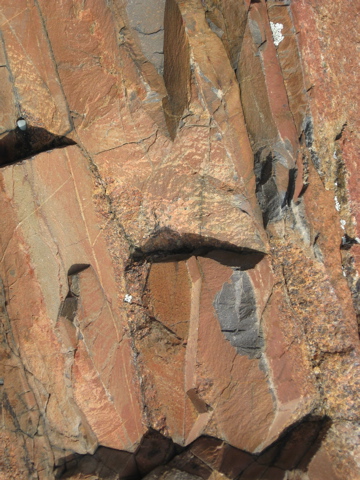
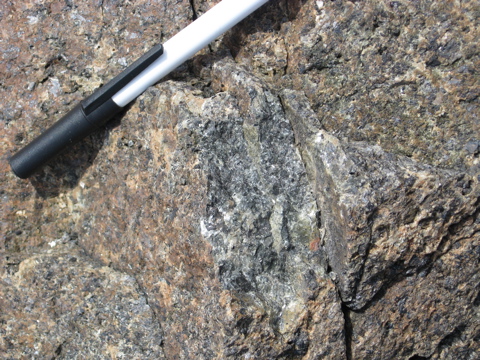
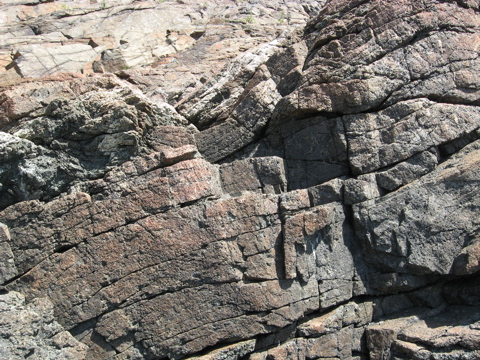

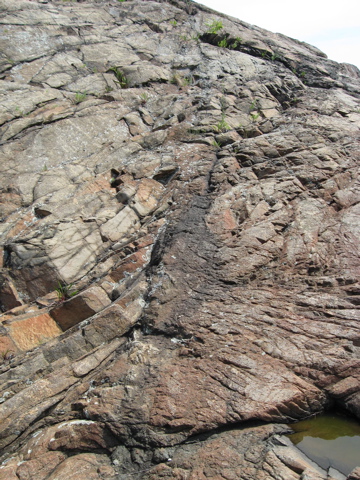
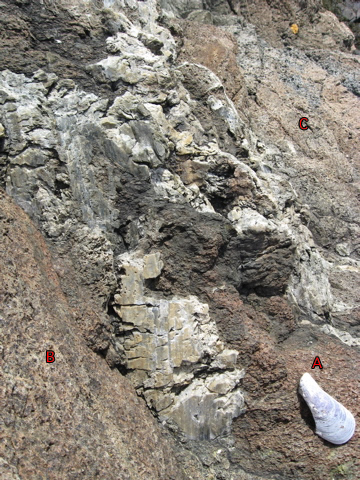
Location #4: Detail of the fault area. Notice the slick whitish grey mineral. What happens in a fault that might explain the presence of this type mineral?
Look at where the shell is (labeled "A" in the picture. That type of rock has been metamorphosed because of the motion of the fault. Compare and contrast the rock in location "A" with the rock outside the "slicked" area (location "B" and "C" in the picture).
We highlight the picture above because it show a very interesting metamorphic process that produces slickenside. This is a process of localized metamorphism in which minerals form on the surface between two rocks that slide past one another. The frictional heating is the source of heat for the mineral recrystallization.
Note that the areas labeled "B" and "C" are the same rock type - the area labeled "A" has been metamorphosed.

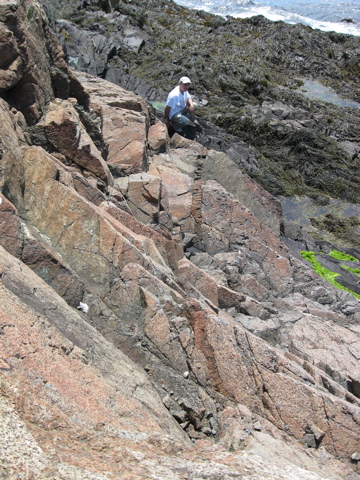
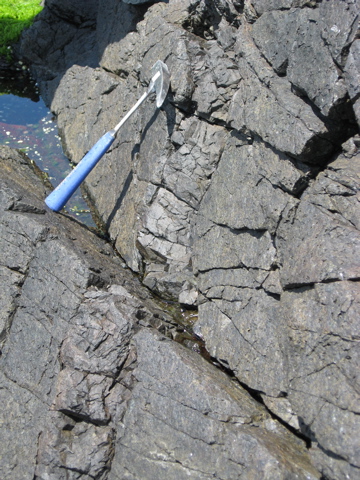



Look carefully and compare the pictures of the East and West sides of the cove. Notice that the exposed rock on the West side has distinct, sharp edges and smooth faces. Compare that to the much more rounded and randomly fractured rocks on the East side. What ideas do you have about why the two sides appear so different?

